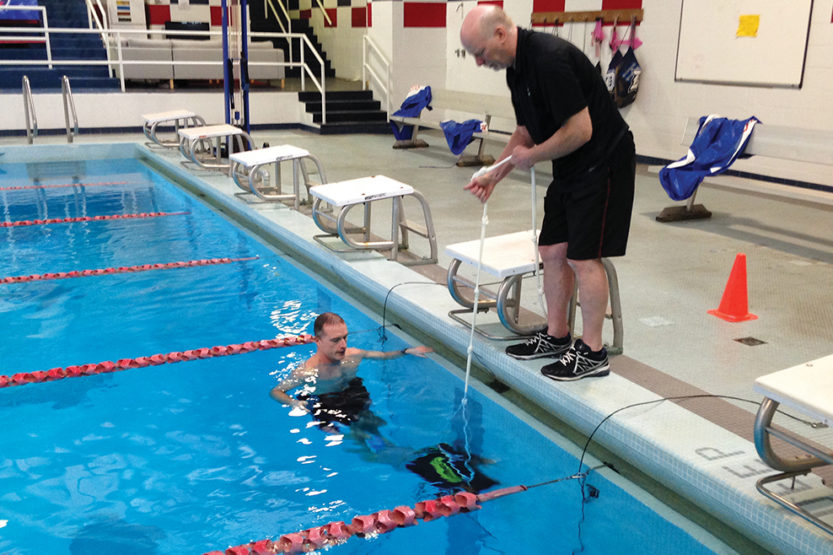Aquatic innovator Daniel Lynch
 Swim Stroke Doctor High Performance Swimming Underwater Video system “helps coaches teach better,” says former Illini swimmer Daniel Lynch. (Photo courtesy of Daniel Lynch)
Swim Stroke Doctor High Performance Swimming Underwater Video system “helps coaches teach better,” says former Illini swimmer Daniel Lynch. (Photo courtesy of Daniel Lynch) On land, coaches video-record golfers and other athletes from multiple angles to help improve their technique. Swim coaches have lacked that luxury—that is, until former Illini swimmer Daniel Lynch, ‘78 LAS, invented the Swim Stroke Doctor High Performance Swimming Underwater Video system. Inspired by pool toys that propel themselves beneath the surface, the patent-pending technology allows side and forward views down the full length of a pool lane. Now, swimmers and coaches nationwide—including those at Ohio State University—roll tape, and then make immediate corrections to improve speed, increase efficiency and prevent injury.
How did you come up with the idea?
In 2012, my son and I were in the deep end of a pool playing with rubber rockets, pushing them back and forth. When we came up for air, I said, “Hey, Danny, I know how to make this!” I took a pencil and drew on a piece of paper. He said, “Yeah, Dad, let’s do it!” We had it in the water about three weeks later.
What took you from “aha” moment to marketable product?
I’m not an engineer, so I first went to Illinois MakerLab (in Urbana, Ill.) for 3-D printing. When I [exceeded] past their capabilities, I reached out to the Dept. of Mechanical Science and Engineering Rapid Prototyping Lab, also in Urbana. I believe they can probably make anything down there. Now, we’re on the third generation of our product.
If you’re happy with the working model, you have a year to decide if you’re going to patent it. Then you say, “What else do I need for a business? What did UI teach me?” You’ve got to build a website; you’ve got the business operations side; you’ve got to go to trade shows.
You’ve called this “game-changing” for young swimmers. How so?
Today’s kids are digital natives. Most are visual learners. This technology gives them a chance to see what the coach is talking about in order to make stroke corrections. The x-factor is that it helps coaches teach better. And that, to me, is truly what it’s all about: running a video and a coach interacting with a kid. It’s the greatest thing a coach can give to a kid.

